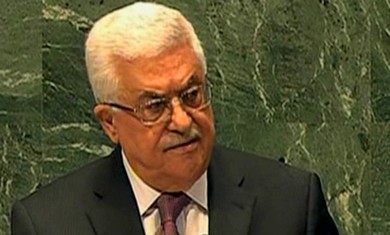Source(google.com.pk)
UN Partition Palestine Biography
History, and different perceptions of history, are perhaps the most important factors in the Arab-Israeli conflict. Accounts of history, interpreting history in different ways, are used to justify claims and to negate claims, to vilify the enemy and to glorify "our own" side. Dozens of accounts have been written. Most of the accounts on the Web are intended to convince rather than to inform.
This very brief account is intended as a balanced overview and introduction to Palestinian and Israeli history, and the history of the conflict. It is unlikely that anyone has written or will write an "objective" and definitive summary that would be accepted by everyone, but it is hoped that this document will provide a fair introduction.
It would be wrong to try to use this history to determine "who is right," though many "histories" have certainly been written by partisans of either side, with precisely that purpose in mind. Those who are interested in advocacy, in collecting "points" for their side, cannot find the truth except by accident. If they find it, and it is inconvenient, they will bury it again. This account intends to inform, and nothing more. Two separate documents explain how I think we should gather facts and learn about the conflict, and the importance of words in making Middle East history, as well as in understanding it. A timeline provides details of many events not discussed in this history, and source documents provide additional background. Serious students will also refer to the bibliography for more information and different viewpoints, and will always seek out primary source documents to verify whatever claims are made about those documents or about quotes from those documents.The land variously called Israel and Palestine is a small, (10,000 square miles at present) land at the eastern end of the Mediterranean Sea. During its long history, its area, population and ownership varied greatly. The present state of Israel occupies all the land from the Jordan river to the Mediterranean ocean, bounded by Egypt in the south, Lebanon in the north, and Jordan in the East. The recognized borders of Israel constitute about 78% of the land. The remainder is divided between land occupied by Israel since the 1967 6-day war and the autonomous regions under the control of the Palestinian autonomy. The Gaza strip occupies an additional 141 square miles south of Israel, and is under the control of the Palestinian authority.
Palestine has been settled continuously for tens of thousands of years. Fossil remains have been found of Homo Erectus, Neanderthal and transitional types between Neanderthal and modern man. Archeologists have found hybrid Emmer wheat at Jericho dating from before 8,000 B.C., making it one of the oldest sites of agricultural activity in the world. Amorites, Canaanites, and other Semitic peoples related to the Phoenicians of Tyre entered the area about 2000 B.C. The area became known as the Land of Canaan.The archeological record indicates that the Jewish people evolved out of native Cana'anite peoples and invading tribes. Some time between about 1800 and 1500 B.C., it is thought that a Semitic people called Hebrews (hapiru) left Mesopotamia and settled in Canaan. Canaan was settled by different tribes including Semitic peoples, Hittites, and later Philistines, peoples of the sea who are thought to have arrived from Mycenae, or to be part of the ancient Greek peoples that also settled Mycenae.
According to the Bible, Moses led the Israelites, or a portion of them, out of Egypt. Under Joshua, they conquered the tribes and city states of Canaan. Based on biblical traditions, it is estimated that king David conquered Jerusalem about 1000 B.C. and established an Israelite kingdom over much of Canaan including parts of Transjordan. The kingdom was divided into Judea in the south and Israel in the north following the death of David's son, Solomon. Jerusalem remained the center of Jewish sovereignty and of Jewish worship whenever the Jews exercised sovereignty over the country in the subsequent period, up to the Jewish revolt in 133 AD.
The Assyrians conquered Israel in 722 or 721 B.C. The Babylonians conquered Judea or Judah around 586 B.C. They destroyed Solomon's Temple in Jerusalem, and exiled a large number of Jews. About 50 years later, the Persian king Cyrus conquered Babylonia. Cyrus allowed a group of Jews from Babylonia to rebuild Jerusalem and settle in it. However, a large number of Jews remained in Babylonia, forming the first Jewish Diaspora. After the reestablishment of a Jewish state or protectorate, the Babylonian exiles maintained contact with authorities there. The Persians ruled the land from about 530 to 331 B.C. Alexander the Great then conquered the Persian Empire. After Alexander's death in 323 B.C., his generals divided the empire. One of these generals, Seleucus, founded a dynasty that gained control of much of Palestine about 200 B.C. At first, the new rulers, called Seleucids, allowed the practice of Judaism. But later, one of the kings, Antiochus IV, tried to prohibit it. In 167 B.C., the Jews revolted under the leadership of the Maccabeans and either drove the Seleucids out of Palestine or at least established a large degree of autonomy, forming a kingdom with its capital in Jerusalem. The kingdom received Roman "protection" when Judah Maccabee was made a "friend of the Roman senate and people" in 164 B.C. according to the records of Roman historians.
About 61 B.C., Roman troops under Pompei invaded Judea and sacked Jerusalem in support of King Herod. Judea had become a client state of Rome. Initially it was ruled by the client Herodian dynasty. The land was divided into districts of Judea, Galilee, Peraea and a small trans-Jordanian section, each of which eventually came under direct Roman control. The Romans called the large central area of the land, which included Jerusalem, Judea. According to Christian belief, Jesus Christ was born in Bethlehem, Judea, in the early years of Roman rule. Roman rulers put down Jewish revolts in about A.D. 70 and A.D. 132. In A.D. 135, the Romans drove the Jews out of Jerusalem, following the failed Bar Kochba revolt. The Romans named the area Palaestina, at about this time. The name Palaestina, which became Palestine in English, is derived from Herodotus, who used the term Palaistine Syria to refer to the entire southern part of Syria, meaning "Philistine Syria." Most of the Jews who continued to practice their religion fled or were forcibly exiled from Palestine, eventually forming a second Jewish Diaspora. However, Jewish communities continued to exist, primarily in the Galilee, the northernmost part of Palestine. Palestine was governed by the Roman Empire until the fourth century A.D. (300's) and then by the Byzantine Empire. In time, Christianity spread to most of Palestine. The population consisted of Jewish converts to Christianity and paganism, peoples imported by the Romans, and others who had probably inhabited Palestine continuously.
During the seventh century (A.D. 600's), Muslim Arab armies moved north from Arabia to conquer most of the Middle East, including Palestine. Jerusalem was conquered about 638 by the Caliph Umar (Omar) who gave his protection to its inhabitants. Muslim powers controlled the region until the early 1900's. The rulers allowed Christians and Jews to keep their religions. However, most of the local population gradually accepted Islam and the Arab-Islamic culture of their rulers. Jerusalem (Al-Quds) became holy to Muslims as the site where, according to tradition, Muhammad ascended to heaven after a miraculous overnight ride from Mecca on his horse Al-Buraq. The al-Aqsa mosque was built on the site generally regarded as the area of the Jewish temples.
The Seljuk Turks conquered Jerusalem in 1071, but their rule in Palestine lasted less than 30 years. Initially they were replaced by the Fatimid rulers of Egypt. The Fatimids took advantage of the Seljuk struggles with the Christian crusaders. They made an alliance with the crusaders in 1098 and captured Jerusalem, Jaffa and other parts of Palestine.
The Crusaders, however, broke the alliance and invaded Palestine about a year later. They captured Jaffa and Jerusalem in 1099, slaughtered many Jewish and Muslim defenders and forbade Jews to live in Jerusalem. They held the city until 1187. In that year, the Muslim ruler Saladin conquered Jerusalem. The Crusaders then held a smaller and smaller area along the coast of Palestine, under treaty with Saladin. However, they broke the treaty with Saladin and later treaties. Crusade after crusade tried to recapture Jerusalem, but they were unable to do so for more than a brief period.










UN Partition Palestine Biography
History, and different perceptions of history, are perhaps the most important factors in the Arab-Israeli conflict. Accounts of history, interpreting history in different ways, are used to justify claims and to negate claims, to vilify the enemy and to glorify "our own" side. Dozens of accounts have been written. Most of the accounts on the Web are intended to convince rather than to inform.
This very brief account is intended as a balanced overview and introduction to Palestinian and Israeli history, and the history of the conflict. It is unlikely that anyone has written or will write an "objective" and definitive summary that would be accepted by everyone, but it is hoped that this document will provide a fair introduction.
It would be wrong to try to use this history to determine "who is right," though many "histories" have certainly been written by partisans of either side, with precisely that purpose in mind. Those who are interested in advocacy, in collecting "points" for their side, cannot find the truth except by accident. If they find it, and it is inconvenient, they will bury it again. This account intends to inform, and nothing more. Two separate documents explain how I think we should gather facts and learn about the conflict, and the importance of words in making Middle East history, as well as in understanding it. A timeline provides details of many events not discussed in this history, and source documents provide additional background. Serious students will also refer to the bibliography for more information and different viewpoints, and will always seek out primary source documents to verify whatever claims are made about those documents or about quotes from those documents.The land variously called Israel and Palestine is a small, (10,000 square miles at present) land at the eastern end of the Mediterranean Sea. During its long history, its area, population and ownership varied greatly. The present state of Israel occupies all the land from the Jordan river to the Mediterranean ocean, bounded by Egypt in the south, Lebanon in the north, and Jordan in the East. The recognized borders of Israel constitute about 78% of the land. The remainder is divided between land occupied by Israel since the 1967 6-day war and the autonomous regions under the control of the Palestinian autonomy. The Gaza strip occupies an additional 141 square miles south of Israel, and is under the control of the Palestinian authority.
Palestine has been settled continuously for tens of thousands of years. Fossil remains have been found of Homo Erectus, Neanderthal and transitional types between Neanderthal and modern man. Archeologists have found hybrid Emmer wheat at Jericho dating from before 8,000 B.C., making it one of the oldest sites of agricultural activity in the world. Amorites, Canaanites, and other Semitic peoples related to the Phoenicians of Tyre entered the area about 2000 B.C. The area became known as the Land of Canaan.The archeological record indicates that the Jewish people evolved out of native Cana'anite peoples and invading tribes. Some time between about 1800 and 1500 B.C., it is thought that a Semitic people called Hebrews (hapiru) left Mesopotamia and settled in Canaan. Canaan was settled by different tribes including Semitic peoples, Hittites, and later Philistines, peoples of the sea who are thought to have arrived from Mycenae, or to be part of the ancient Greek peoples that also settled Mycenae.
According to the Bible, Moses led the Israelites, or a portion of them, out of Egypt. Under Joshua, they conquered the tribes and city states of Canaan. Based on biblical traditions, it is estimated that king David conquered Jerusalem about 1000 B.C. and established an Israelite kingdom over much of Canaan including parts of Transjordan. The kingdom was divided into Judea in the south and Israel in the north following the death of David's son, Solomon. Jerusalem remained the center of Jewish sovereignty and of Jewish worship whenever the Jews exercised sovereignty over the country in the subsequent period, up to the Jewish revolt in 133 AD.
The Assyrians conquered Israel in 722 or 721 B.C. The Babylonians conquered Judea or Judah around 586 B.C. They destroyed Solomon's Temple in Jerusalem, and exiled a large number of Jews. About 50 years later, the Persian king Cyrus conquered Babylonia. Cyrus allowed a group of Jews from Babylonia to rebuild Jerusalem and settle in it. However, a large number of Jews remained in Babylonia, forming the first Jewish Diaspora. After the reestablishment of a Jewish state or protectorate, the Babylonian exiles maintained contact with authorities there. The Persians ruled the land from about 530 to 331 B.C. Alexander the Great then conquered the Persian Empire. After Alexander's death in 323 B.C., his generals divided the empire. One of these generals, Seleucus, founded a dynasty that gained control of much of Palestine about 200 B.C. At first, the new rulers, called Seleucids, allowed the practice of Judaism. But later, one of the kings, Antiochus IV, tried to prohibit it. In 167 B.C., the Jews revolted under the leadership of the Maccabeans and either drove the Seleucids out of Palestine or at least established a large degree of autonomy, forming a kingdom with its capital in Jerusalem. The kingdom received Roman "protection" when Judah Maccabee was made a "friend of the Roman senate and people" in 164 B.C. according to the records of Roman historians.
About 61 B.C., Roman troops under Pompei invaded Judea and sacked Jerusalem in support of King Herod. Judea had become a client state of Rome. Initially it was ruled by the client Herodian dynasty. The land was divided into districts of Judea, Galilee, Peraea and a small trans-Jordanian section, each of which eventually came under direct Roman control. The Romans called the large central area of the land, which included Jerusalem, Judea. According to Christian belief, Jesus Christ was born in Bethlehem, Judea, in the early years of Roman rule. Roman rulers put down Jewish revolts in about A.D. 70 and A.D. 132. In A.D. 135, the Romans drove the Jews out of Jerusalem, following the failed Bar Kochba revolt. The Romans named the area Palaestina, at about this time. The name Palaestina, which became Palestine in English, is derived from Herodotus, who used the term Palaistine Syria to refer to the entire southern part of Syria, meaning "Philistine Syria." Most of the Jews who continued to practice their religion fled or were forcibly exiled from Palestine, eventually forming a second Jewish Diaspora. However, Jewish communities continued to exist, primarily in the Galilee, the northernmost part of Palestine. Palestine was governed by the Roman Empire until the fourth century A.D. (300's) and then by the Byzantine Empire. In time, Christianity spread to most of Palestine. The population consisted of Jewish converts to Christianity and paganism, peoples imported by the Romans, and others who had probably inhabited Palestine continuously.
During the seventh century (A.D. 600's), Muslim Arab armies moved north from Arabia to conquer most of the Middle East, including Palestine. Jerusalem was conquered about 638 by the Caliph Umar (Omar) who gave his protection to its inhabitants. Muslim powers controlled the region until the early 1900's. The rulers allowed Christians and Jews to keep their religions. However, most of the local population gradually accepted Islam and the Arab-Islamic culture of their rulers. Jerusalem (Al-Quds) became holy to Muslims as the site where, according to tradition, Muhammad ascended to heaven after a miraculous overnight ride from Mecca on his horse Al-Buraq. The al-Aqsa mosque was built on the site generally regarded as the area of the Jewish temples.
The Seljuk Turks conquered Jerusalem in 1071, but their rule in Palestine lasted less than 30 years. Initially they were replaced by the Fatimid rulers of Egypt. The Fatimids took advantage of the Seljuk struggles with the Christian crusaders. They made an alliance with the crusaders in 1098 and captured Jerusalem, Jaffa and other parts of Palestine.
The Crusaders, however, broke the alliance and invaded Palestine about a year later. They captured Jaffa and Jerusalem in 1099, slaughtered many Jewish and Muslim defenders and forbade Jews to live in Jerusalem. They held the city until 1187. In that year, the Muslim ruler Saladin conquered Jerusalem. The Crusaders then held a smaller and smaller area along the coast of Palestine, under treaty with Saladin. However, they broke the treaty with Saladin and later treaties. Crusade after crusade tried to recapture Jerusalem, but they were unable to do so for more than a brief period.
UN Partition Palestine
UN Partition Palestine

UN Partition Palestine
UN Partition Palestine

UN Partition Palestine

UN Partition Palestine

UN Partition Palestine
UN Partition Palestine

UN Partition Palestine

UN Partition Palestine

UN Partition Palestine
No comments:
Post a Comment